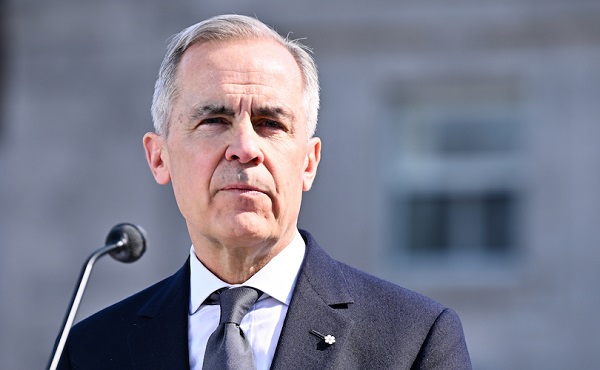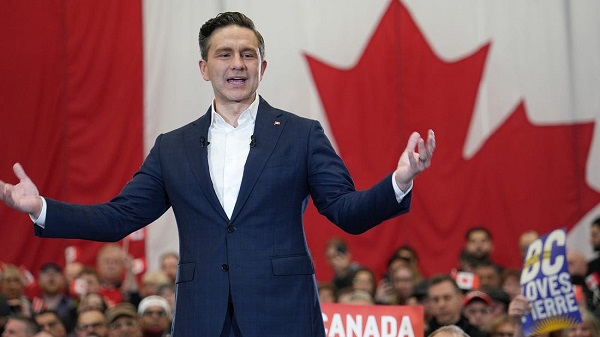Crime
Police make significant arrests stemming from long weekend crime spree

May 24, 2019
Central Area District RCMP make significant arrests from long weekend incidents
Red Deer, Alta. – “Multiple members across various jurisdictions were involved with this dangerous crime spree,” says S/Sgt Mark Groves Central Alberta District RCMP. “Policing efforts do not have borders, nor do crimes so we will continue to pursue these repeat offenders throughout the province of Alberta.”
Central Area District (CAD) RCMP are laying over 40 charges against 4 people stemming from multiple incidents that primarily took place in the Red Deer and Sylvan Lake, Alta. area during the Victoria Day long weekend. These approximately 30 occurrences involved serious risk to police and public as firearms were involved in the commission of these crimes.
On May 16, 2019, at 4:30 a.m., a stolen truck was involved in multiple break and enters with the use of discharging firearms to gain entry.
On May 17, 2019, at 1:30 a.m., Rimbey RCMP were dispatched to a residential break and enter in progress at which a firearm was produced. The suspects fled the scene in a stolen truck. At approximately 2 a.m., Sylvan Lake RCMP located the truck near Bentley, Alta. traveling at a high rate of speed. The suspect vehicle ultimately took a dead end township road and entered a ditch. An unknown number of people fled from the vehicle into a wooded area, and one female was arrested.
The stolen truck from the previous morning’s incidents arrives in the area and swerved at RCMP members who were trying to deploy a tire deflation device. The fleeing individual(s) jumped into the white truck and RCMP members pursued. The pursuit continued through the Town of Sylvan Lake where firearms from the truck were discharged multiple times at police. During the pursuit, a female fell from the truck and was arrested without incident. The truck was located unoccupied a short distance away, having collided with a parked vehicle. A loaded firearm was recovered from the vehicle.
On May 19, 2019, at 1:30 a.m., Sylvan Lake RCMP responded to a 911 call of a break and enter in progress in the Sylvan Lake industrial area., Sylvan Lake, Red Deer RCMP, along with the Emergency Response Team (ERT) and Police Dog Services made contact with a suspect vehicle which swerved at members. An officer discharged their firearm at the vehicle, but no one in the vehicle was injured. A second suspect vehicle, a truck stolen from the industrial property, fled through fencing and was immediately pursued by ERT. The vehicle stopped a short time later, due to mechanical failure, and a male was arrested without incident.
On May 21, 2019, at around 2:45 p.m., a male suspect was taken into custody without incident after he was arrested driving a stolen car.
Danelle Rickett (32) of no fixed address has been charged with:
· Possession of stolen property over $5,000
· Possession of stolen property under $5,000
· Joyriding
Rickett was released from custody after a judicial hearing with conditions, and will appearing in Red Deer Provincial Court on May 29, 2019.
Samantha Johnston (29) of Red Deer has been charged with:
· Possession of stolen property over $5,000
· Possession for the purpose of trafficking
· Breach of recognizance (x4)
Johnston has been remanded into custody after a judicial hearing, and will be appearing in Red Deer Provincial Court on May 30, 2019.
Tyler Harris (23) of Red Deer has been charged with:
· Break and enter of a business (x2)
· Disguise with intent
· Breach of recognizance (x4)
· Flight from police
Harris has been remanded into custody after a judicial hearing, and will be appearing in Red Deer Provincial Court on June 12, 2019.
Zacharias Paradoski, of the Red Deer has been charged with 39 offences, some of which include:
· Using a firearm in the commission of an offence
· Possession of a weapon for a dangerous purpose
· Break and Enter
· Discharging a firearm
· Possession of break and enter instruments
· Disguise with intent
Paradoski was remanded into custody after a judicial hearing, and will be appearing in Red Deer Provincial Court on June 5, 2019.
No RCMP members were injured during any of these incidents.
As this matter is now before the courts no further details will be provided.
Catherine Herridge
FBI imposed Hunter Biden laptop ‘gag order’ after employee accidentally confirmed authenticity: report
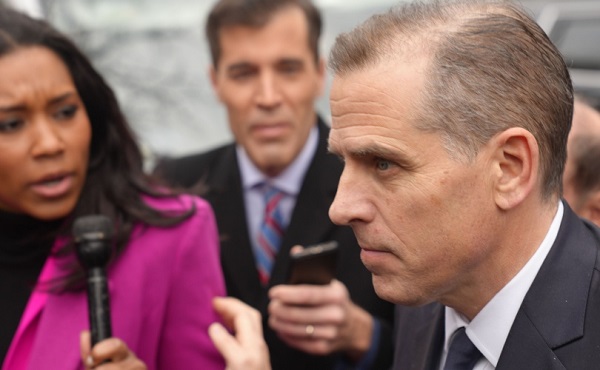
From LifeSiteNews
Two independent journalists found that the FBI could have set the record straight by confirming the laptop was real and the subject of an ongoing criminal probe. Instead, FBI leadership allowed the false narrative about the laptop to gain momentum.
In a shocking report published on X, independent journalists Catherine Herridge and Michael Shellenberger revealed that an FBI agent accidentally confirmed to Twitter (now known as “X”) that the Hunter Biden laptop story was real less than three weeks before the 2020 election.
“For the first time, and with a change of administration, the FBI has now turned over to GOP House investigators the internal chat messages that show Bureau leadership actively silenced its employees,” Herridge and Shellenberger wrote on X.
“The FBI, which had a special task force to counter foreign election interference, could have set the record straight by confirming the laptop was real and the subject of an ongoing criminal probe,” the journalists explained. “Instead, FBI leadership allowed the false narrative about the laptop to gain momentum.”
“In 2024, an FBI official admitted to House investigators that an FBI employee had inadvertently confirmed the authenticity of Hunter Biden’s laptop to Twitter on a conference call the morning of October 14, 2020, the day the New York Post published a story about it,” Shellenberger wrote.
“I recall that when the question came up, an intelligence analyst assigned to the Criminal Investigative Division said something to the effect of, ‘Yes, the laptop is real,’” testified the then-Russia Unit Chief of the FBI’s Foreign Influence Task Force in a closed-door transcribed interview,” according to Herridge and Shellenberger. “I believe it was an (Office of General Counsel) attorney assigned to the (Foreign Influence Task Force) stepped in and said, ‘We will not comment further on this topic.’”
They recounted this exchange:
An individual whose name is blacked out, tells Elvis M. Chan, the San Francisco-based FBI special agent tasked with interacting with social media companies, there was a “gag order” on discussion of Hunter Biden’s laptop. In a separate exchange, Chan is told “official response no commen(t).”
In the chat, the FBI officials showed awareness that the laptop may have contained evidence of criminal activity.
Asked Chan, “actually what kind of case is the laptop thing? corruption? campaign financing?”
Another FBI employee responds, “CLOSE HOLD —” after which the response is redacted.
To which Chan responds, “oh crap,” appearing to underscore the serious nature of the probe, which included felony tax charges. Chan adds, “ok. It ends here.”
In the same conversation, Chan is asked if “anyone discussing that NYPost article on the Biden’s?” Chan responds, “yes we are. c d confirmed an active investigation. No further comment.” “C D” is likely shorthand for the FBI’s Criminal Division.
Said another FBI employee, whose name was redacted by the Bureau, “please do not discuss biden matter.”
It’s now common knowledge that national security agencies — including the FBI and CIA, Big Tech, and much of corporate media — colluded in suppressing truth and manufacturing lies in order to drag their preferred candidate, Joe Biden, across the finish line in the 2020 presidential election.
Incriminating evidence discovered on the laptop that Hunter Biden had long ago abandoned at a computer repair shop — reported on in two devastating pieces by the New York Post at the time — was ignored by mainstream media, fraudulently dismissed by former national intelligence officials, and essentially made inaccessible to the public by Big Tech social media sites Twitter and Facebook.
The computer contained emails showing that then-Vice President Biden had come under the influence of bad actors in Ukraine and Communist China and had used his powerful position in the Obama administration to pressure government Ukrainian officials into firing a prosecutor who was investigating the energy firm, Burisma, which was paying the younger Biden $50,000 per month to sit on its board of directors.
Crime
First Good Battlefield News From Trump’s Global War on Fentanyl

From for the Daily Wire
Maltz attributes slowing fentanyl smuggling directly to Trump’s controversial 25% trade tariffs, which compelled the first Mexican military raids against production labs in Sinaloa Cartel-controlled Culiacán, Mexico.
It’s early but not too early to note that President Donald Trump’s all-out World War on cross-border fentanyl smuggling into the United States, the highly lethal synthetic opiate responsible for 120,000 American overdose deaths in recent years, is achieving remarkable impacts for the first time in a decade.
A key indicator of broader total smuggling at and between the southern border’s ports of entry — U.S. law enforcement seizures of fentanyl — has dropped 50% since the November election, indicating a greater decline in total fentanyl smuggling.
That decline is attributable to Trump’s reset of U.S. Customs and Border Protection orders to aggressively hunt the drug as they and thousands of active-duty soldiers are now free of the distracting duty of processing hundreds of thousands of illegal immigrants crossing the southern border every month throughout Joe Biden’s term. Trump policies quickly ended that mass migration distraction, as I wrote in The Daily Wire on March 20.

A 2024 seizure of fentanyl pills manufactured in Mexico. DEA photo.
For context on the change with inbound fentanyl flows, from 2019 to 2023, the amounts seized rose every year in tandem with American overdose deaths and remained high in the 2,000-pound monthly range during 2024.
But In December and January, President-elect Trump threatened devastating trade tariffs against Mexico if they did not seriously crack down on cartel production and smuggling even before he entered office.
From October 2024 to January 2025, Southwest Border seizures of fentanyl fell from 2,000 pounds in 85 seizure events, to 990 pounds in 47 seizure events, CBP seizure data shows. Then in February 2025, seizures plummeted even further to 590 pounds in 45 events.
Combined, those January and February numbers are 50% less than the same period in 2024 and among the very lowest monthlies recorded since 2020.

City of Scottsdale, AZ, police department.
Ranking administration officials, Border Patrol supervisors who hunt the drug on the ground, and media reporting from cartel laboratory-infested regions of Mexico tell us that March’s seizure numbers will solidify a reversal of a deadly decade-long upward fentanyl smuggling trend.
“Trump’s policies are having an impact, one hundred percent,” Acting Administrator of Trump’s Drug Enforcement Administration Derek Maltz told me for this Daily Wire story. And for Americans concerned about the scourge of fentanyl, there’s much more they will find surprising.
A Remarkable Display Of Cartel Pragmatism In Response To Trump

Derek S. Maltz, U.S. Drug Enforcement Administration. Photo by Gabe Skidmore. Wikimedia Commons.
What Maltz said next almost defies commonly believed narratives about Mexico’s cartel crime syndicates — especially the idea that they are more impulsively violent than strategic and pragmatic. Yet, according to Maltz, cartel leaders appear to have opted for a surprising strategic change in the face of Trump’s campaign against them over fentanyl.
The cartels appear to have determined that since Trump is so bad for business, they have decided to quit smuggling it into the American market and send it to Europe and other parts of the world instead. What to do about the lost revenue? Easy. Make up the difference by shipping greater volumes of less-politically and physiologically lethal drugs like cocaine and methamphetamine, Maltz said.
“We got their attention with a lot of talk about the deaths in America, and the cartels got very concerned. It became a business decision.” Maltz told me.
Indeed, cartels in the fentanyl crosshairs are facing a unique, existential threat that no prior president in modern times has imposed, over just this one line of cartel business. While it’s too early for anyone to declare victory in Trump’s unprecedented war on fentanyl, Maltz attributes slowing fentanyl smuggling directly to Trump’s controversial 25% trade tariffs, which compelled the first Mexican military raids against production labs in Sinaloa Cartel-controlled Culiacán, Mexico.
After his November 2024 election win, Trump vowed to follow through with executive orders that would establish punishing tariffs on China for tolerating the export of precursor fentanyl-making chemicals to Mexico. And almost since inauguration day, Trump’s moves have compelled the destruction of laboratories.

Andrew Harnik/Getty Images
He designated nine Mexican cartels as Foreign Terrorist Organizations subject to global financial isolation, surveillance and terrorism charges for anyone who partners with them.
The cartels no doubt also felt heat from unspecified threats of possible U.S. military action against them and their labs. Indeed, Trump has increased U.S. spy flights over Mexico, repositioned CIA officers into Mexico, deployed war ships to the Pacific and Gulf of America, and put specialized light infantry divisions on the southern border facing Mexico.
An Unlikely Source Of Credit For Trump: The New York Times
As part of the Trump administration, Maltz might be expected to lose some credibility by crediting his boss’s policies for good news about fentanyl.
Maltz is hardly alone, however, in attributing Trump’s policies to early apparent success. Natalie Kitroeff, the New York Times’ Mexico City bureau chief toured some manufacturing labs in the city of Culiacán with another reporter in December 2024, the Sinaloa Cartel-controlled city believed to be Mexico’s central hub for manufacturing fentanyl with well over 100 labs.

Getty Images. View of the historic center of Culiacán, capital city of the state of Sinaloa, with the main Alvaro Obregón street that runs from north to south.
In a March 2025 interview on the newspaper’s The Daily podcast, Kitroeff said she returned to Culiacán after Trump’s inauguration “to see whether all of the pressure that Trump had put on Mexico had led to real changes, whether any of this actually made a difference.”
After serendipitously witnessing Mexican troops raiding labs as she drove through Culiacán on a follow-up trip, Kitroeff’s conclusion was clear.
“It was really remarkable. The dynamics, it seemed, had completely changed from the last time we were there,” she said, adding that her cartel sources “told us there was basically no production of fentanyl happening in the city. It had totally plummeted, fallen off a cliff” because “there is such an intense crackdown by the government right now.”
“Is this all because of Trump?” the show’s host Michael Barbaro asked Kitroeff.
“Yeah, I think that’s what it looks like to a lot of people, a lot of regular Mexicans, a lot of cartel members, and a lot of security experts who have been studying this for a long time,” she responded.
“I think it’s pretty clear that the amount of progress, arrests, raids, lab busts, the pace of these actions is something that we’ve not seen in recent history in Mexico. One analyst told us, we’ve seen in one month what we might have seen in years,” Kitroeff continued. “I think what we’ve seen is that at least in this context, in this month, and in this place, the tariffs worked, for now at least.”
The reporter and Maltz said production still goes on elsewhere in Mexico.
But Maltz said his government intelligence suggests the cartels are contemplating shipping the drug to Europe, Australia and to other wealthy developed countries but not as much to the United States because of the Trump heat.
“They’re going to produce it and ship it over that way instead,” he said. “There’s a very good chance that other parts of the world may be getting shipments of fentanyl from the cartels, unless they just curtail the production altogether, which I don’t see happening.”
He and others also note that U.S. law enforcement began seizing higher volumes of cocaine and methamphetamine smuggled over the border since Trump’s election instead of fentanyl, also suggesting a self-preserving cartel strategy change.
What About American Deaths?

Michael Siluk/UCG/Universal Images Group via Getty Images
Another vital indicator that warrants tracking as a means to judge the long-term success of Trump’s muscular fentanyl initiatives: overdose deaths.
It’s just too early to know how the apparently falling smuggling rates translate into saved lives. Significant declines in overdose deaths began a year ago, according to the latest Center for Disease Control report on the subject, which lags real time by four months. Death rates fell by 24% for the 12 months through September 2024, from 114,000 to a still outrageous 87,000. The CDC attributes the decline to better life-saving treatment and awareness programs inside the United States but also to a factor it dubs without elaboration “shifts in the illegal drug supply.”

National Center for Health Statistics. CDC.
That factor almost assuredly is a reference to a secretive deal that President Joe Biden bartered for Mexico in December 2023 to deploy 35,000 troops with orders to militarily contain illegal immigration flows in deep southern Mexico to help Biden’s presidential reelection campaign defend its border policies against Trump. Mexico responded to Biden’s favor request with major impactful force throughout the Biden or Harris reelection campaign that dramatically reduced human smuggling, as I frequently reported, and also no doubt hindered some fentanyl smuggling.
Trump watchers and all Americans who authentically care about the extreme damage this drug from Mexico has wrought on the United States should hope seizures continue to plummet as this likely means less is getting smuggled over. But Americans deserve to know if “shifts in illegal drug supply” is saving far more American lives.
If that body count number alone continues an even faster decline, Trump will have earned his country’s enduring gratitude and a place of reverence in American history. So far, anyway, the early results give rise to optimism.
* * *
Todd Bensman is a Senior National Security Fellow, Center for Immigration Studies and a two-time National Press Club award winner. He is a graduate of the University of Missouri School of Journalism and a 23-year veteran newspaper reporter. He is the author of “America’s Covert Border War,” and “Overrun: How Joe Biden Unleashed the Greatest Border Crisis in U.S. History.”
-

 Catherine Herridge1 day ago
Catherine Herridge1 day agoFBI imposed Hunter Biden laptop ‘gag order’ after employee accidentally confirmed authenticity: report
-
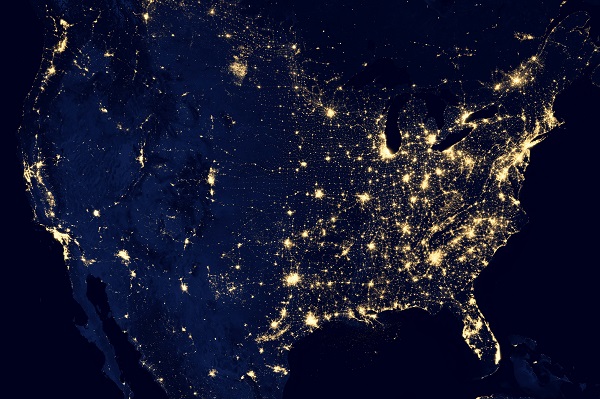
 International1 day ago
International1 day agoTrump’s ‘Golden Dome’ defense shield must be built now, Lt. Gen. warns
-

 2025 Federal Election1 day ago
2025 Federal Election1 day agoDon’t let the Liberals fool you on electric cars
-

 Crime1 day ago
Crime1 day agoFirst Good Battlefield News From Trump’s Global War on Fentanyl
-

 Courageous Discourse11 hours ago
Courageous Discourse11 hours agoEurope Had 127,350 Cases of Measles in 2024
-

 Daily Caller1 day ago
Daily Caller1 day ago‘Drill, Baby, Drill’ Or $50 Oil — Trump Can’t Have Both
-
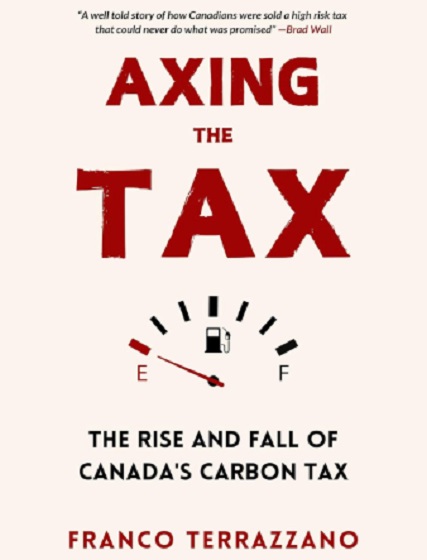
 Carbon Tax2 days ago
Carbon Tax2 days agoThe book the carbon taxers don’t want you to read
-
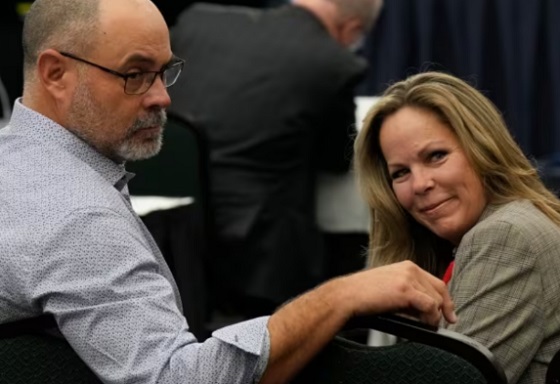
 2025 Federal Election2 days ago
2025 Federal Election2 days agoInside the Convoy Verdict with Trish Wood


